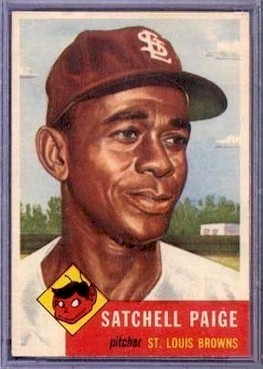Reading a little everyday has long term effects (all good) and we’ve got some suggestions for you. Have you checked out the library’s IDEA WALL? February is all about “What’s Your Passion?” and features 15 contemporary and classic novels about passion and love. Come by and share your passion!
![IMG_20150206_073707[1]](https://blogs.iwu.edu/library/files/2015/02/IMG_20150206_0737071-300x171.jpg) Pride and Prejudice by Jane Austen (1813) PR4034.P72 J36 1987
Pride and Prejudice by Jane Austen (1813) PR4034.P72 J36 1987
Sparks fly when spirited Elizabeth Bennet meets single, rich, and proud Mr. Darcy. But Mr. Darcy reluctantly finds himself falling in love with a woman beneath his class. Can each overcome their own pride and prejudice?
The Princess Bride by William Goldman (1992) PS3557.O384 P7 1992
William Goldman’s modern fantasy classic is a simple, exceptional story about quests—for riches, revenge, power, and, of course, true love—that’s thrilling and timeless.
Gone with the Wind by Margaret Mitchell (1964) PS3525.I972 G6 1964A
In the two main characters, the white-shouldered, irresistible Scarlett and the flashy, contemptuous Rhett, Margaret Mitchell not only conveyed a timeless story of survival under the harshest of circumstances, she also created two of the most famous lovers in the English-speaking world since Romeo and Juliet.
Jane Eyre by Charlotte Bronte (1847) PR4167 .J35 1969
Having grown up an orphan in the home of her cruel aunt and at a harsh charity school, Jane Eyre becomes an independent and spirited survivor-qualities that serve her well as governess at Thornfield Hall. But when she finds love with her sardonic employer, Rochester, the discovery of his terrible secret forces her to make a choice. Should she stay with him whatever the consequences or follow her convictions, even if it means leaving her beloved?
Bet Me by Jennifer Crusie (2004)
Minerva Dobbs knows that happily-ever-after is a fairy tale, especially with a man who asked her to dinner to win a bet. When they say good-bye at the end of their evening, they cut their losses and agree never to see each other again. But Fate has other plans, and it’s not long before Min and Cal meet again. Soon, they’re dealing with more risky propositions than either of them ever dreamed of, including the biggest gamble of all-true love.
I’ve Got Your Number by (2013)
Poppy Wyatt is about to marry her ideal man, Magnus Tavish, but in one afternoon her “happily ever after” begins to fall apart. Not only has she lost her engagement ring but her phone is stolen too. Soon, she spots an abandoned phone in a trash can. Finders keepers! Except that the phone’s owner, businessman Sam Roxton, doesn’t agree. He wants his phone back and doesn’t appreciate Poppy reading his messages and wading into his personal life. What ensues is a hilarious and unpredictable turn of events as Poppy and Sam increasingly upend each other’s lives through emails and text messages. As Poppy juggles wedding preparations, mysterious phone calls, and hiding her left hand from Magnus and his parents, she soon realizes that she is in for the biggest surprise of her life.
The Time Traveler’s Wife by Audrey Niffenegger (2003)
A dazzling novel in the most untraditional fashion, this is the remarkable story of Henry DeTamble, a dashing, adventuresome librarian who travels involuntarily through time, and Clare Abshire, an artist whose life takes a natural sequential course. Henry and Clare’s passionate love affair endures across a sea of time and captures the two lovers in an impossibly romantic trap, and it is Audrey Niffenegger’s cinematic storytelling that makes the novel’s unconventional chronology so vibrantly triumphant.
Outlander (Outlander #1) by Diana Gabaldon (1991)
The year is 1945. Claire Randall, a former combat nurse, is just back from the war and reunited with her husband on a second honeymoon when she walks through a standing stone in one of the ancient circles that dot the British Isles. Suddenly she is a Sassenach—an “outlander”—in a Scotland torn by war and raiding border clans in the year of Our Lord . . . 1743. Hurled back in time, Claire is catapulted into the intrigues of lairds and spies that may threaten her life, and shatter her heart. For here James Fraser, a gallant young Scots warrior, shows her a love so absolute that Claire becomes a woman torn between fidelity and desire—and between two vastly different men in two irreconcilable lives.
Vanity Fair by William Makepeace Thackeray (1847) PR5618 .W57 1987
No one is better equipped in the struggle for wealth and worldly success than the alluring and ruthless Becky Sharp, who defies her impoverished background to clamber up the class ladder. Her sentimental companion Amelia, however, longs only for caddish soldier George. As the two heroines make their way through the tawdry glamour of Regency society, battles—military and domestic—are fought, fortunes made and lost. The one steadfast and honourable figure in this corrupt world is Dobbin with his devotion to Amelia, bringing pathos and depth to Thackeray’s gloriously satirical epic of love and social adventure.
A Knight to Remember by Bridget Essex (2014)
A book-obsessed librarian, Holly dreams of a woman who will sweep her off her feet–something her indifferent girlfriend has never done. But one night, magic and romance appear in Holly’s backyard in the form of a mysterious, gorgeous woman wielding a sword. The dashing stranger’s name is Virago who claims that she’s a warrior on the hunt for a great and terrible beast; that both slipped through a portal from their world into ours. Holly is now responsible for a swordswoman who is bewildered by modern-day conveniences, but not by the chivalry of sweeping a woman off her feet. Can Holly help Virago find her own world again, or will that falling-in-love thing get in the way?
Tigers and Devils (Tigers and Devils #1) by Sean Kennedy (2009)
Despite his loneliness, Simon Murray is always cautious about looking for more than friends. Then his best friends drag him to a party, where he meets star forward Declan Tyler. In that first awkward meeting, neither man has any idea they will change each other’s lives forever. But as the two form a relationship, keeping Declan’s homosexuality a secret from friends and the media becomes difficult. Nothing can stay hidden forever. Soon Declan will have to choose between the career he loves and the man he wants.
Almost Like Being in Love by Steve Kluger (2004)
A high school jock and nerd fall in love senior year, only to part after an amazing summer of discovery to attend their respective colleges, and slowly drift apart. Flash forward twenty years. Travis and Craig both have great lives, but something is missing. Travis realizes he’s still in love with Craig, and he’s going after the boy who captured his heart, no matter what it takes. Told in narrative, letters, checklists, and more, this is the must-read novel for anyone who’s wondered what ever happened to that first great love.
Wuthering Heights by Emily Brontë (1847)
This is a wild, passionate story of the intense and almost demonic love between Catherine Earnshaw and Heathcliff, a foundling adopted by Catherine’s father. After Mr Earnshaw’s death, Heathcliff is bullied and humiliated by Catherine’s brother and wrongly believing that his love for Catherine is not reciprocated, leaves Wuthering Heights, only to return years later as a wealthy and polished man. He proceeds to exact a terrible revenge for his former miseries. The action of the story is chaotic and unremittingly violent, but the accomplished handling of a complex structure, the evocative descriptions of the lonely moorland setting and the poetic grandeur of vision combine to make this unique novel a masterpiece of English literature.
Norwegian Wood by Haruki Murakami (1987)
Toru, a quiet and preternaturally serious young college student in Tokyo, is devoted to Naoko, a beautiful and introspective young woman, but their mutual passion is marked by the tragic death of their best friend years before. Toru begins to adapt to campus life and the loneliness and isolation he faces there, but Naoko finds the pressures and responsibilities of life unbearable. As she retreats further into her own world, Toru finds himself reaching out to others and drawn to a fiercely independent and liberated young woman.
The Well of Loneliness by Radclyffe Hall (1928)
Stephen Gordon is an Englishwoman from an upper-class family whose “sexual inversion” (homosexuality) is apparent from an early age. She finds love with Mary Llewellyn, whom she meets while serving as an ambulance driver in World War I, but their happiness together is marred by social isolation and rejection, which Radclyffe Hall depicts as having a debilitating effect on inverts. The novel portrays inversion as a natural, God-given state and makes an explicit plea: “Give us also the right to our existence”






![IMG_20150206_073707[1]](https://blogs.iwu.edu/library/files/2015/02/IMG_20150206_0737071-300x171.jpg)






 The Treaty of Guadalupe Hidalgo
The Treaty of Guadalupe Hidalgo